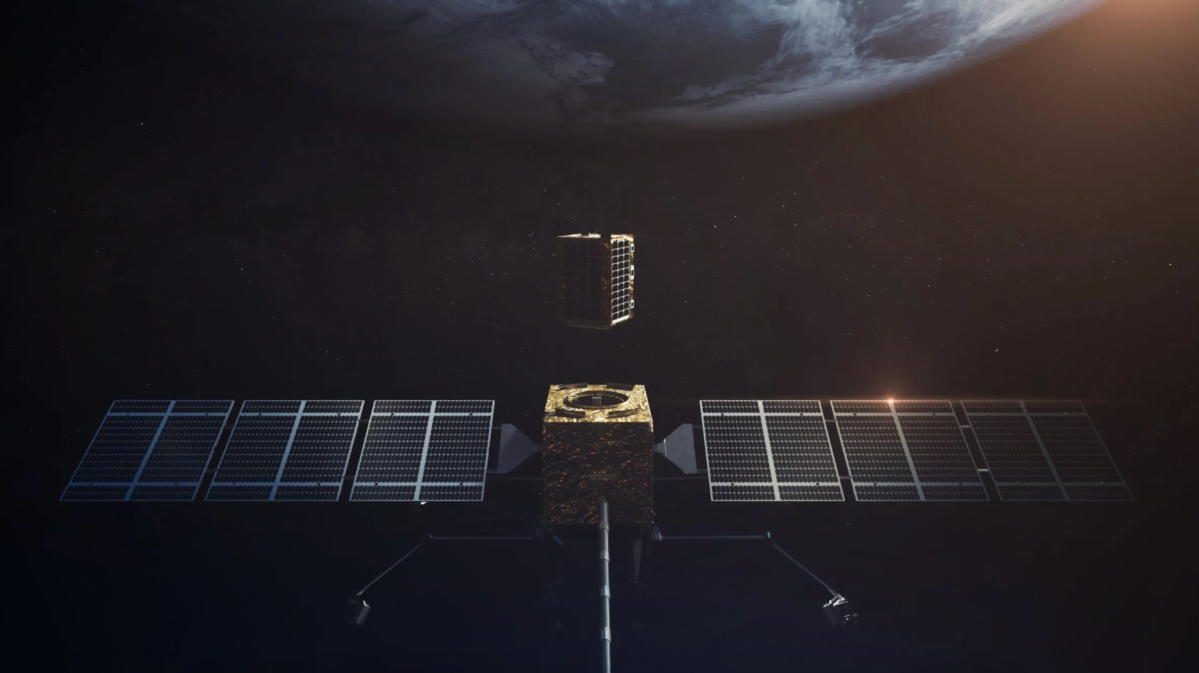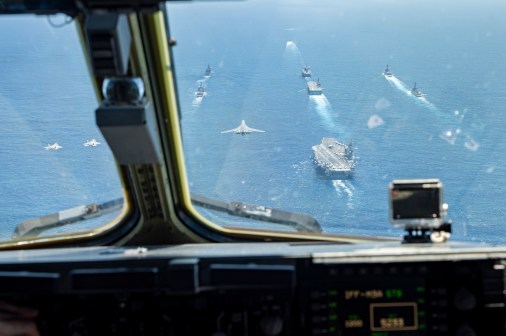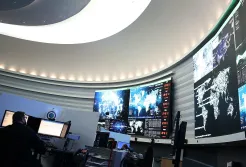Space Force prodded to provide clear demand signal for on-orbit mobility, servicing capabilities

ORLANDO, Fla. — In an effort to have more maneuverable and longer-lasting satellites on orbit, the Space Force wants to lean heavily on commercial innovations in refueling, maintenance and other logistics technologies that can be used for military spacecraft. However, despite some initial forward movement by the service, industry is still looking for some direction — as well as critical funding — from the Pentagon that will steer technology developments in the right direction and give a boost to the overall market.
It is a back-and-forth that repeatedly came up this week during the Space Mobility Conference in Orlando, Florida, which kicked off with Diane Howard, head of commercial space policy for the White House National Space Council, urging the Space Force and other federal agencies to take concrete steps toward acquiring capabilities.
“We need a clear demand signal from government users,” Howard said during her opening keynote at the conference. “We need to identify and prioritize resources, funding and personnel. We need requirements for the use of mobility and logistics, and we need roadmaps.”
Today’s satellites are unable to be refueled once they are launched and it’s incredibly difficult to perform maintenance on them if they become damaged in space. Leaders at U.S. Space Command have previously noted these limitations often influence how mission planners and satellite operators maneuver systems.
Now, the combatant command is sending the message to Space Systems Command — the acquisition arm of the Space Force — that it needs to close this gap in order to extend the capabilities of its platforms.
“What we’re looking at Space Systems Command … is military-dominant value propositions for on-orbit servicing and maneuver,” Col. Erik Stockham, director of SSC’s space warfighting acquisition delta, said during a panel at the conference. “Just like in every other domain where you can sustain and move forward in order to make sure that you’re not caught flat-footed, we should be able to do the same thing in space for our systems.”
The goal is to achieve “dynamic space operations,” or the ability to easily and quickly respond to threats on orbit or changes in the space domain without risking losing fuel or permanent damage to a satellite. Spacecom wants to have sustained maneuverability operational by 2028 and plans to host a demonstration of the capability no later than 2026.
To get there, Stockham emphasized that the Space Force is taking many of its cues from technology developed in the commercial sector.
“This is not going to be a government-directed or government-manded development effort, this is going to be leveraging commercial,” he said.
However, members of the burgeoning on-orbit servicing and logistics industry highlighted throughout the conference that they currently don’t have the capacity to do the work on their own. Instead, it’s hoping that the government will serve as the foundation for the commercial market’s growth.
“They’re waiting to see these capabilities on orbit,” Robert Hauge, president of Northrop Grumman subsidiary SpaceLogistics, said during a panel. “And I would echo … that if the Space Force really wants to see this move — and there is definitely movement in that direction, it is profitable — but to really take these technologies and tailor it to the needs of the Space Force, the Space Force is going to need to come in and send that demand signal.”
That would include indications of sustained, long-term funding for personnel and development activities in the service’s budget, Clare Martin, executive vice president of Astroscale, said.
In September, the Space Force stood up a servicing, mobility and logistics (SML) program office at SSC to help advocate for sustained funding and planning efforts — which at the moment are focused on satellite refueling capabilities. The service has awarded Astroscale a $25.5 million contract to deliver an on-orbit refueling prototype by 2026, and it has also begun certifying industry designs as standards for refueling ports that can be integrated onto satellites.
In addition to funding, industry is looking for ways to better understand what the Space Force’s biggest problems and requirements are, according to Jon Slaughter, director of government relations at Sierra Space.
That means “more opportunity for different sides of the table to start offering our perspectives and our opinions on things,” Slaughter said at a separate panel discussion. “One of the things that our company has been trying so hard is to get our foot in the door with different opportunities so that we can prove ourselves and prove our technology.”
Another part of the problem is the overall novelty of space mobility and logistics capabilities. Brig. Gen. Kristin Panzenhagen, program executive officer for assured access to space, said during the conference that some analysis needs to be done before the service can start sending off requirements to industry.
“When we talk about a new capability such as this, there’s always policy considerations,” Panzenhagen said. “From a service perspective, there are questions on how it will be used, what are the concepts of operations, what are the tactics, techniques and procedures to include training — how do we train something like this? There’s a question on the acquisition strategy. Are we procuring a capability or a service? Are we procuring an asset that the government will then operate?”
The Space Force has held some tabletop exercises — dubbed “Parallax Rising” — with industry participation in order to examine the potential architectures for space mobility and logistics technologies and understand how commercial capabilities can be integrated in the future.
Martin noted that being invited to these events is helpful for companies, as it allows them to see exactly how the government wants to use refueling tools.
“That kind of collaborative gaming between industry and the government really does help get past preconceptions and assumptions as to what commercial is doing and what the government needs,” Martin said.
During a roundtable with reporters Wednesday, Col. Joyce Bulson, director of the SML program office, said that the Space Warfighting Analysis Center — the service’s organization responsible for creating operational concepts and force design guidance — has not conducted a study for space mobility and logistics. She added that her office has met with stakeholders and service leadership in order to understand the broad scope of the requirements documents it has been given.
She noted that because this is an almost entirely new mission area, industry needs to have “realistic expectations” as to what kind of demand signal the Space Force can offer at the moment.
“We’re looking to leverage commercial service to the maximum extent possible, so we’re not looking for a significant government investment in bringing these capabilities to bear,” Bulson said.
To move forward, Martin emphasized that both industry and government should stop pointing fingers at one another and instead tackle the problem together.
“Let’s move past [arguments about] should the government wait for commercial or should commercial wait. We need to work together,” she said. “By working together, we can accelerate the capability, we can bring it to market sooner and we can maintain U.S. leadership in that area. So, let’s maintain that.”






